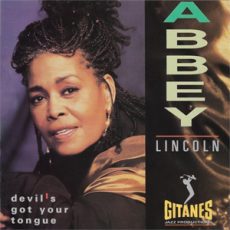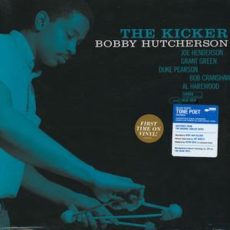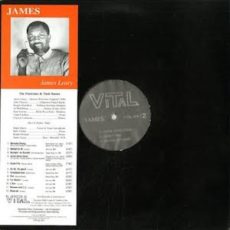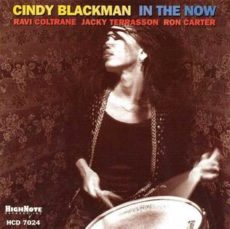
Daily Dose Of Jazz…
Patrick Cairns “Spike” Hughes was born October 19, 1908 in London, England and spent his childhood mostly with his mother, a psychiatrist who was involved in extensive travel in France and Italy, as well as a more settled period of education at Perse School in Cambridge. By 1923 when he was 15 he spent an extended period in Vienna, Austria studying composition with Egon Wellesz.
He began writing his first music criticism for The Times of London and heard his first jazz at the Weinberg Bar, Weihburggasse, a band led by trumpeter Arthur Briggs. Returning to the UK in 1926, Hughes had a solo cello sonata performed in London and wrote the incidental music for two theatre productions in Cambridge.
His interest in jazz was stimulated by the London revue Blackbirds, starring Florence Mills and Edith Wilson in 1926. It was an enthusiasm he shared with his friends, the composers Constant Lambert and William Walton and the conductor Hyam Greenbaum. He taught himself double bass using a German string bass made of tin, the spike of which led to his nickname. He formed his own jazz group in 1930 and was one of the earliest artists signed to Decca Records in England and recorded over 30 sessions between 1930 and 1933.
Originally billed as Spike Hughes and his Decca-Dents, but it was changed either to his Dance Orchestra or Three Blind Mice for smaller sessions. From 1931, he played regularly with the Jack Hylton Band and his career in jazz culminated in 1933 with a visit to New York, where he arranged three recording sessions involving members of Benny Carter’s and Luis Russell’s orchestras with Coleman Hawkins and Henry “Red” Allen from Fletcher Henderson’s band.
After the New York recordings, Spike ceased performing jazz and orchestrated and conducted shows for C B Cochran and using the pseudonym Mike wrote jazz reviews for Melody Maker, Daily Herald and The Times from 19531 to 1967. He established performance and recording opportunities for American bands in England.
He wrote radio plays accompanied by his own musical scores for the BBC, writing and broadcasting, conducting the BBC Theatre Orchestra, and for BBC Television. As a writer, regular BBC broadcaster and critic his subjects also included food and travel. He wrote sixteen composition, five film scores, fifteen books and recorded four albums,
Composer, arranger and double bassist Spike Hughes, who became better known as a broadcaster and humorous author, transitioned on February 2, 1987.
More Posts: bandleader,bass,history,instrumental,jazz,music

The Quarantined Jazz Voyager
This week we continue to safeguard ourselves from those who consider the variants not a threat but this jazz voyager is opting on the side of caution as we select our next album. I’ve chosen the studio album Devil’s Got Your Tongue by Abbey Lincoln. It’s her fifteenth and her third for Verve Records. It was recorded on February 24 & 25, 1992 at BMG Studios in New York City and released on October 13, 1992.
The album peaked at No. 2 on the Billboard Jazz Albums chart on April 10, 1993. Verve allowed this icon of jazz to record nine of her compositions along with two classics for a very gratifying set.
Tracks | 68:56 All tracks are written by Abbey Lincoln, unless otherwise noted.- Rainbow (with The Noel Singers) (Abbey Lincoln, Melba Liston) ~ 4:42
- Evalina Coffrey (The Legend Of) ~ 7:04
- Story Of My Father (with The Staple Singer) ~ 5:28
- A Child Is Born (with The Noel Singers) (Thad Jones, Alex Wilder) ~ 6:20
- People In Me (with The Noel Singers) ~ 6:13
- A Circle Of Love (with The Noel Singers) ~ 5:53
- Jungle Queen ~ 6:09
- The Merry Dance ~ 7:48
- Devil’s Got Your Tongue ~ 5:49
- Spring Will Be A Little Late This Year (Frank Loesser) ~ 7:46
- The Music Is The Magic (with The Staple Singers) ~ 5:44
- Abbey Lincoln – vocals
- Rodney Kendrick – piano
- Marcus McLaurine – bass
- Grady Tate – drums (tracks 2–4, 10–11)
- Yoron Israel – drums (tracks 1, 5, 6, 8–9)
- James Louis “J.J.” Johnson – trombone (tracks 2, 4, 10)
- Stanley Turrentine – tenor saxophone (tracks 5, 8, 10–11)
- Maxine Roach – viola (tracks 2, 6)
- Babatunde Olatunji – Ngoma, Djembe, Ashiko & Shekere drums (track 7)
- Kehinde O’Uhuru – Ashiko drum (track 7)
- Sule O’Uhuru – Agogô bells, Djembe (track 7)
- Gordy Ryan – Jun-jun drum (track 7)
- The Staple Singers – backing vocals
- Pops Staples, Mavis Staples, Cleotha Staples
- The Noel Singers – backup singers
- Ivan Archer, Giselle Brown, Queinton Caesar, Ronnie David, Shelby Ellis, Daylene Hunt, Clevie Jordan, Marie Leveque, Lucila Martinez, Jason Moses, Gregory Norman, Leigh-Ann Oadmore, Aleata Prince, Natasha Reeves, Tiffany Rivera, Linda Sanchez, Joann Santiago Sherrille Shabazz, Chante Slater, Karen Thompson, Teddy Turrene, Merlene West, Tasha Woodward
- Producer – Jean-Philippe Allard
- Engineer (First Engineer) – Rick Applegate
- Engineer (Second Engineer) – Jay Newland
- Engineer (Assistant Engineer) – Doug McKean
- Engineer (Assistant Engineer) – Sandy Palmer
More Posts: adventure,album,club,festival,genius,jazz,museum,music,preserving,restaurant,travel,vocal

Requisites
The Kicker ~ Bobby Hutcherson | By Eddie Carter
In 1963, vibraphonist Bobby Hutcherson recorded his first album as a leader which was supposed to be his debut on Blue Note. Sadly, it wasn’t released, and the session remained in the vaults for thirty-six years until it hit the stores in 1999 as a CD album. The Kicker (Blue Note BST 21437), this morning’s choice from the library submitted for your inspection reunites the musicians that recorded Idle Moments by Grant Green six weeks earlier in November. Joe Henderson on tenor sax, Duke Pearson on piano, Grant Green on guitar (tracks: A3 to B2), Bob Cranshaw on bass, and Al Harewood on drums. My copy used in this report is the 2020 Blue Note Tone Poet Series Stereo audiophile reissue.
Side One commences with Mirrors by Joe Chambers, a very pretty song beginning with a brief introduction by Duke opening the way for Hutcherson and the rhythm section’s delicately gentle theme supported by Henderson. Bobby starts with a stunning showcase that’s intimately passionate and very moving. Joe continues expressing deep feelings on the second statement ahead of the ensemble’s thoughtfully polite ending. For Duke P. Bobby’s swinging dedication to Duke Pearson takes off with a brisk opening chorus in unison. Hutcherson gets right down to business on the first interpretation with a spirited reading. Henderson gets into a vibrant workout next and Pearson swings into the closer confidently before the ensemble reprise and close.
The Kicker by Joe Henderson brings Grant Green to the group with an effervescent opening chorus led by the composer. Henderson begins this swinging affair with a swiftly paced solo, then Bobby launches into the next reading vigorously. Grant brings a lot of joy to the third statement and Duke finds some invigorating things to say ahead of the closing chorus and quick climax. Side Two starts with Henderson’s, Step Lightly, an easygoing blues that the ensemble gets underway with a collectively calm theme. Pearson starts the opening solo with easy, unhurried strokes. Hutcherson is smooth as velvet on the second statement. Green swings with a light, refreshing beat next and Henderson provides a fitting summation with a soulful groove preceding the sextet’s ending theme disappearing into a slow fade.
Bedouin by Duke Pearson possesses a Middle Eastern flavor that begins at a snappier tempo than Duke recorded a year later on Wahoo! The solo order is Joe, Grant, Bobby, and Duke, and each gives charming, articulate performances into an ending theme that dissolves into emptiness. The Kicker was originally produced by Alfred Lion and recorded by Rudy Van Gelder. Joe Harley supervised this reissue, and Kevin Gray did the remastering. The sound quality is outstanding with a breathtaking soundstage. The front and rear covers are high-quality with stunning gatefold photos. The vinyl is 180-gram and incredibly quiet until the music starts. If you enjoy good vibes and are looking for a perfect album to enjoy after a long day or week, I highly recommend and offer for a spot in your library, The Kicker by Bobby Hutcherson. It’s a wonderful companion to Idle Moments that’ll reward its owner with many hours of listening pleasure!
~ Idle Moments (Blue Note BLP 4154/BST 84154), The Kicker (Blue Note Connoisseur Series 7243 5 21437 2 6), Wahoo! (Blue Note BLP 4191/BST 84191) – Source: Discogs.com © 2022 by Edward Thomas Carter
More Posts: choice,classic,collectible,collector,history,instrumental,jazz,music,vibraphone

Requisites
James ~ James Leary | By Eddie Carter
VTL (Vacuum Tube Logic of America), as any audiophile knows, is one of the finest makers of high-end tube audio equipment. In 1991, David Manley, the company’s founder (who began VTL in England, a decade earlier) began recording a small roster of musicians utilizing their tube technology. All the albums recorded on Vital Records and VTL (The Vital Sound) were created in Manley’s newly designed recording studio at 15 IPS on a modified Studer C37 Tube Tape Recorder. If you have the equipment to properly audition them, each record has a breathtaking soundstage that’s mesmerizing. The focus was completely on the music and sound rather than the packaging, this release came in two black twelve-inch cardboard sleeves with the album cover and musicians listed on the left side. Submitted for your consideration this morning is an album by one of the best jazz bassists you may be unfamiliar with, James Leary.
The first of his two records, James (Vital 003) was unlike anything I ever heard before on an album when I first discovered it thirty years ago. The front line for this unique septet is a five-piece string Bass Choir. James Leary is featured on a 1908 England Hawkes-Panormo bass, John Clayton plays an Unknown French Rarity bass, Reggie Hamilton plays a Pollman German-Modern bass, Fred Tinsley plays a Bella Rosa Italy-Modern bass, and Al McKibbon plays a 1620 Steiner bass (tracks: A1 to C2, D1 to D3). The quintet is anchored by Eddie Harris on tenor sax, vocals (track: C3), Billy Childs (track: C3), Todd Cochran (tracks: A1 to C2, D1 to D3) on acoustic piano, Clayton Cameron (tracks: A1 to C2, D1 to D3), Ralph Penland (track: C3) on drums. My copy used in this report is the 1991 two-record Stereo audiophile release.
Side One opens with an original by Thelonious Monk and Denzil Best, Bemsha Swing. The tune originally appeared on Thelonious (1953), and Monk recorded it again on Brilliant Corners (1957). Leary sets a lively mood leading the ensemble through the mid-tempo melody, then launches into a sparkling opening statement. John creates something special on the second reading that’s extremely satisfying. Fred follows with an enthusiastic interpretation, and Al gets a moment in the sun with an outstanding performance shining brilliantly like a diamond. Among the highlights is Wes Montgomery’s Bumpin’ On Sunset. Fred Tinsley opens the song with a gorgeous introduction preceding the main theme. The interplay between the Bass Choir reinterprets this contemporary classic with a gorgeous performance.
Quiet Fire by George Cables begins with the bassists introducing a vigorous opening chorus. Cochran’s lead solo takes off with electric energy. Leary follows, thoroughly swinging on the next reading. Clayton comes in next with an assertive, energetic interpretation, and McKibbon packs a beefy and impressive punch on the closing statement. Wayne Shorter’s Fall is given a breathtaking treatment as Leary and his colleagues state the melody alongside Cochran in the background on the piano. James offers exquisite softness on the first solo. His tuneful conversation with the pianist and Cameron is also affectionate. Hamilton creates a deeply introspective work on the closing reading. There is a freshness and resiliency to his playing with warmth, tenderness, and elegance into the song’s luscious climax.
Leary also composes as well as he plays, as demonstrated on I’m Walkin’, one of the bassist’s six compositions. This tune is loosely based on the 1957 composition by Fats Domino and Dave Bartholomew and is the only quartet performance on this album. Harris’s voice dominates, making a vibrant improvisation on the mid-tempo melody matched by the rhythm section. In the opening statement, Cochran swings easily. Harris’ tenor sax is also clearly defined in the next presentation. Leary solos beautifully on the closing reading preceding the theme’s reprise and ending led by Harris’ scat. This foursome is also featured on James II.
L’ Ear, also by Leary, brings the bassists back to provide a splendid display of vibrant spontaneity as the Bass Choir presents the opening chorus. Cochran and Leary are the featured soloists, Todd is upbeat and spirited on the first statement with a deceptively relaxed approach. Leary sustains a steady flow of ideas on an attractive closing performance. Throughout the remainder of the album, James shines as an enduring commitment to straight-ahead jazz of the highest order. It’s a significant accomplishment by James Leary and a noteworthy release for your library with nearly eighty minutes of music that’s marvelously presented and beautifully recorded!
~ Brilliant Corners (Riverside RLP 12-226/RS 1174), James II (Vital Records ViTaL 005), Thelonious (Prestige PRLP 142) – Source: Discogs.com ~ Bemsha Swing, I’m Walkin’ – Source: Wikipedia.org ~ Fall – https://www.youtube.com/watch?v=9VPOJr0cuRs © 2020 by Edward Thomas Carter
More Posts: bass,choice,classic,collectible,collector,history,instrumental,jazz,music

The Quarantined Jazz Voyager
In The Now is an album by the accomplished percussionist and drummer Cindy Blackman recorded on November 18, 1997 by engineer Rudy Van Gelder at Van Gelder Studio in Englewood Cliffs, New Jersey. It was released on the HighNote label on May 19, 1998.
The producer on the date was Don Sickler, the art direction performed by Wendi Horowitz with photography by Carl Posey. The liner notes were written by Chip Stern.
Track List | 63:23 All compositions by Cindy Blackman except where noted
- In The Now ~ 6:45
- A Banana for Ron ~ 3:22
- Passage ~ 6:40
- A King Among Men ~ 15:00
- Sophia ~ 7:24
- Prince of Darkness (Wayne Shorter) ~ 7:13
- Happy House (Ornette Coleman) ~ 4:34
- A Strawberry for Cindy ~ 4:30
- Let Love Rule (Lenny Kravitz) ~ 7:55
- Cindy Blackman ~ Drums
- Ravi Coltrane ~ Tenor Saxophone, Soprano Saxophone
- Jacky Terrasson ~ Piano, Fender Rhodes
- Ron Carter ~ Bass
More Posts: adventure,album,club,drums,genius,jazz,museum,music,preserving,restaurant,travel




